Costs and benefits of the application of liquid slurry with trailing shoe
Distribution on field of liquid manure with trailing shoe reduces the loss of nutrients and increases the efficiency of organic fertilization, because the manure is applied not onto the plants but on the ground near to the plants roots. This results in a higher rate of absorption of nutrients, lower ammonia emission into the air and lower leaching in to the ground and surface water.
Simulation of the cost and benefits from the economic point view has been carried out considering the production costs of the finishing and cow calf typical farms in Ireland. Economic variables taken into account under the hypothesis of the adoption of this technique are the reduction of the use of chemical nitrogen fertilizers (due to higher efficiency of the organic fertilization), and the difference of the cost charged by an external contractor for the application of manure with the trailing shoe instead of the splash plate or other conventional technique. The following are the value of N fertilizer value according to different application method, showing that a reduction in chemical fertilization is possible
Fertiliser N values from cattle slurry depending on application method
Application method | Nitrogen (kg/m3) spring | Nitrogen (kg/m3) winter |
Trailing shoe | 1,0 | 0,6 |
Trailing hose | 0,8 | 0,5 |
Splash plate | 0,6 | 0,3 |
Cost charged by an external contractors for manure distribution by trailing shoe range from 90-95 €/hr. Distribution manure with conventional technique (splash plate) is charged 50 €/hr (Association of Farm Contractors in Ireland FCI). It was assumed that application by means of the different application methods require the same amount of hour per hectare.
The following tables show the costs and benefits of this technique by comparing the before and after implementation for several farm types.
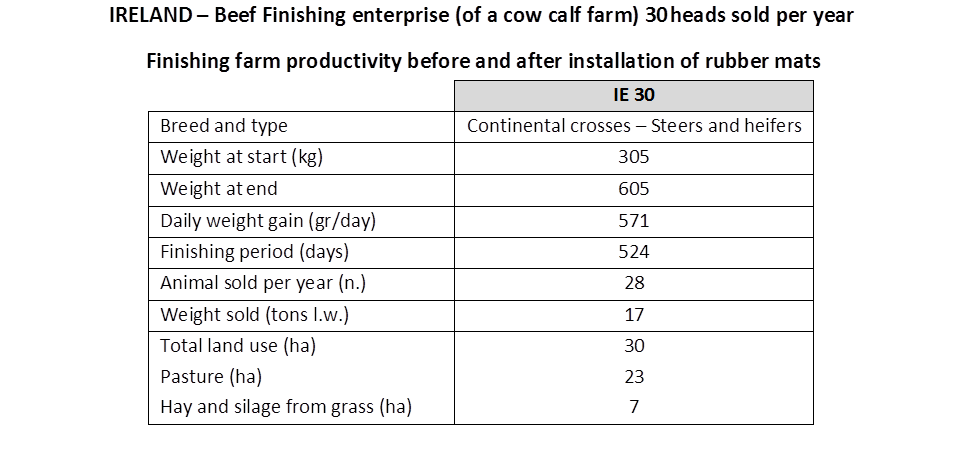
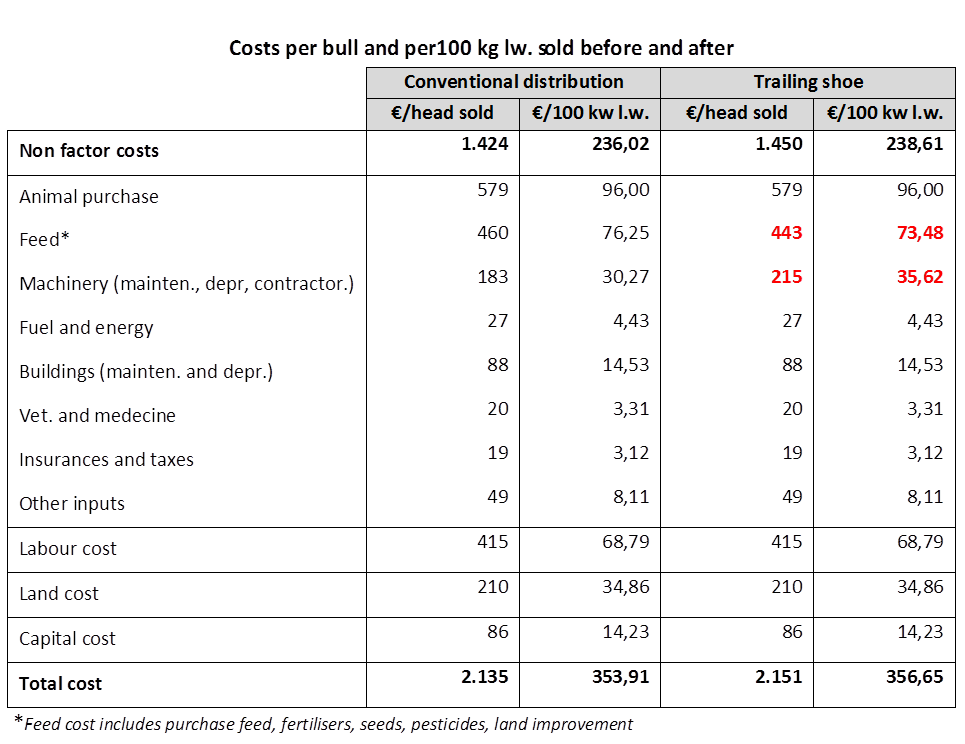
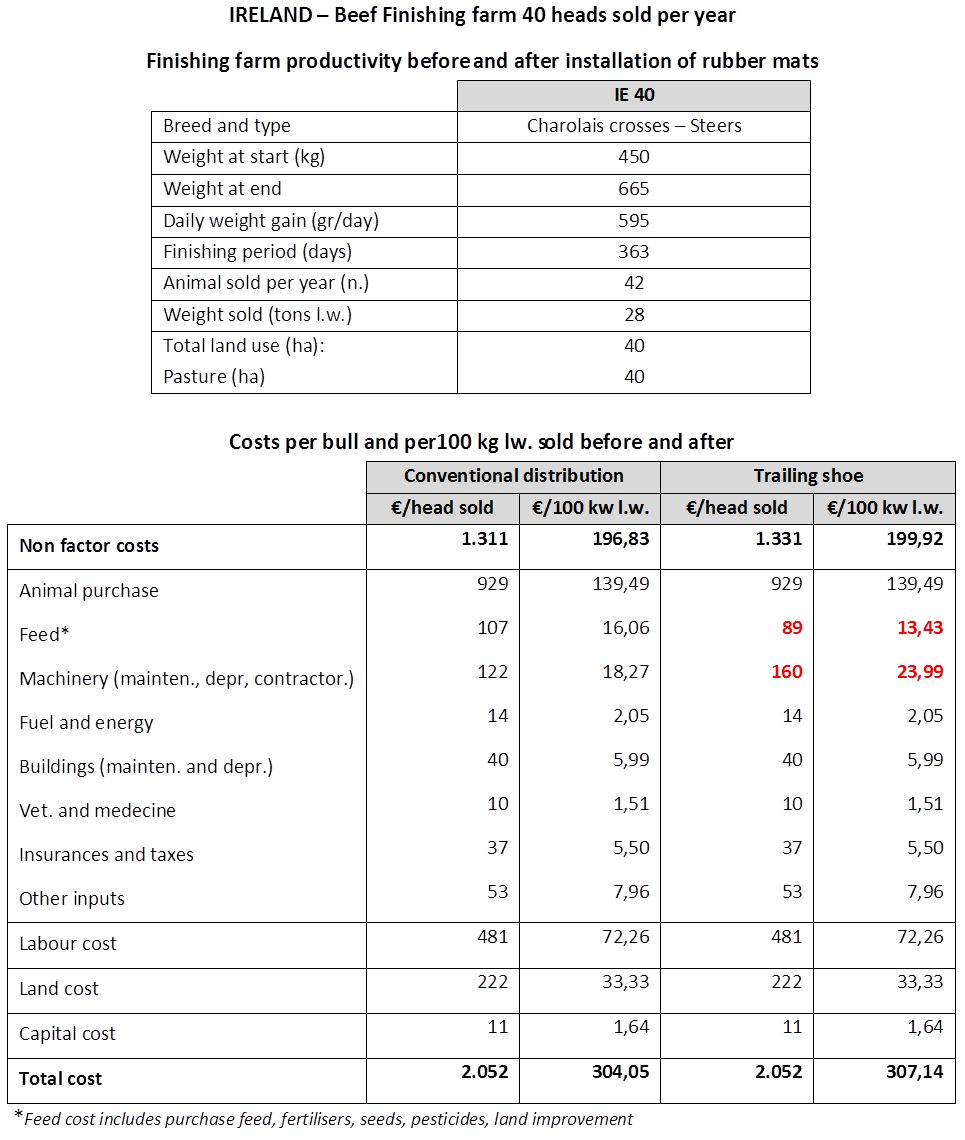
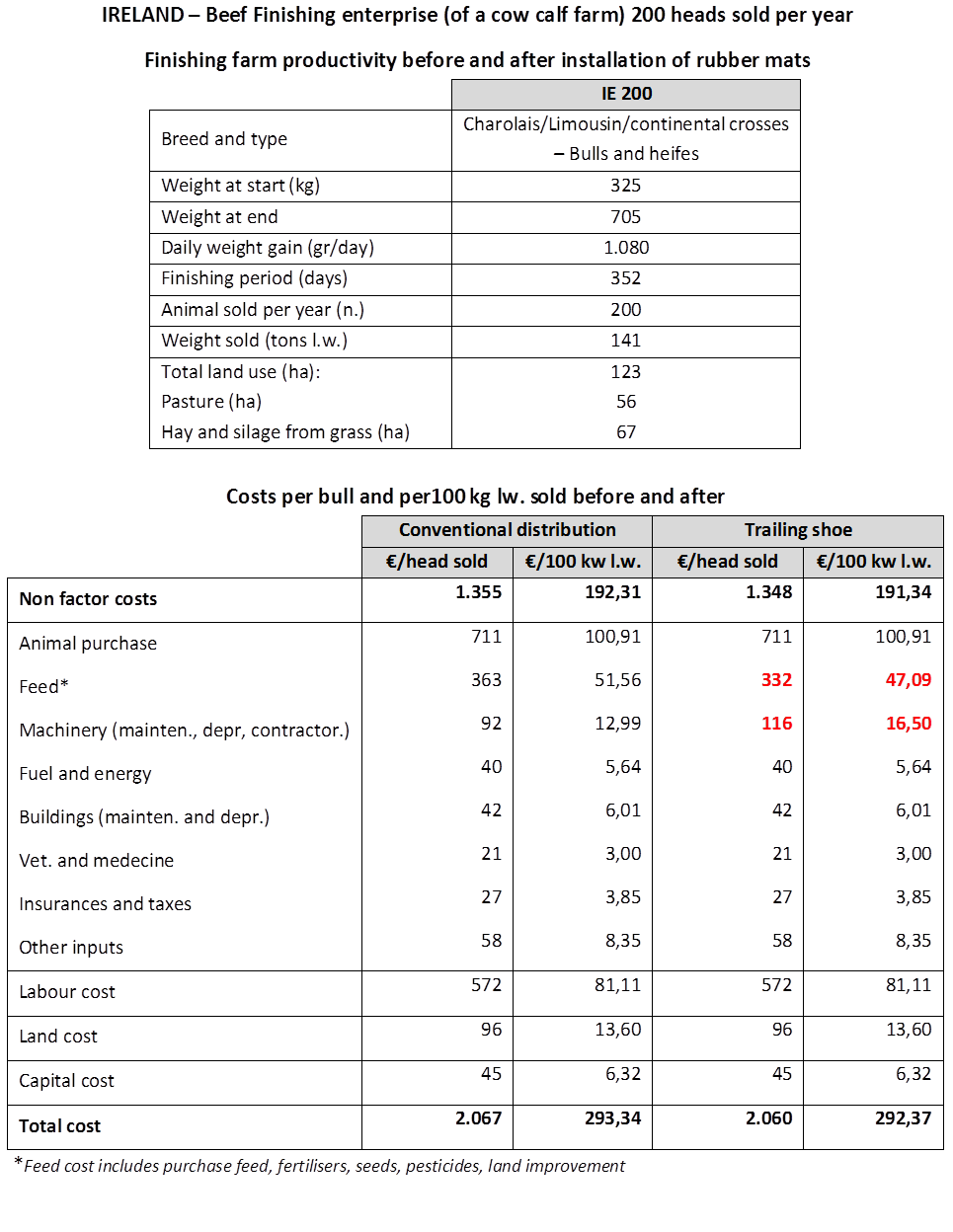
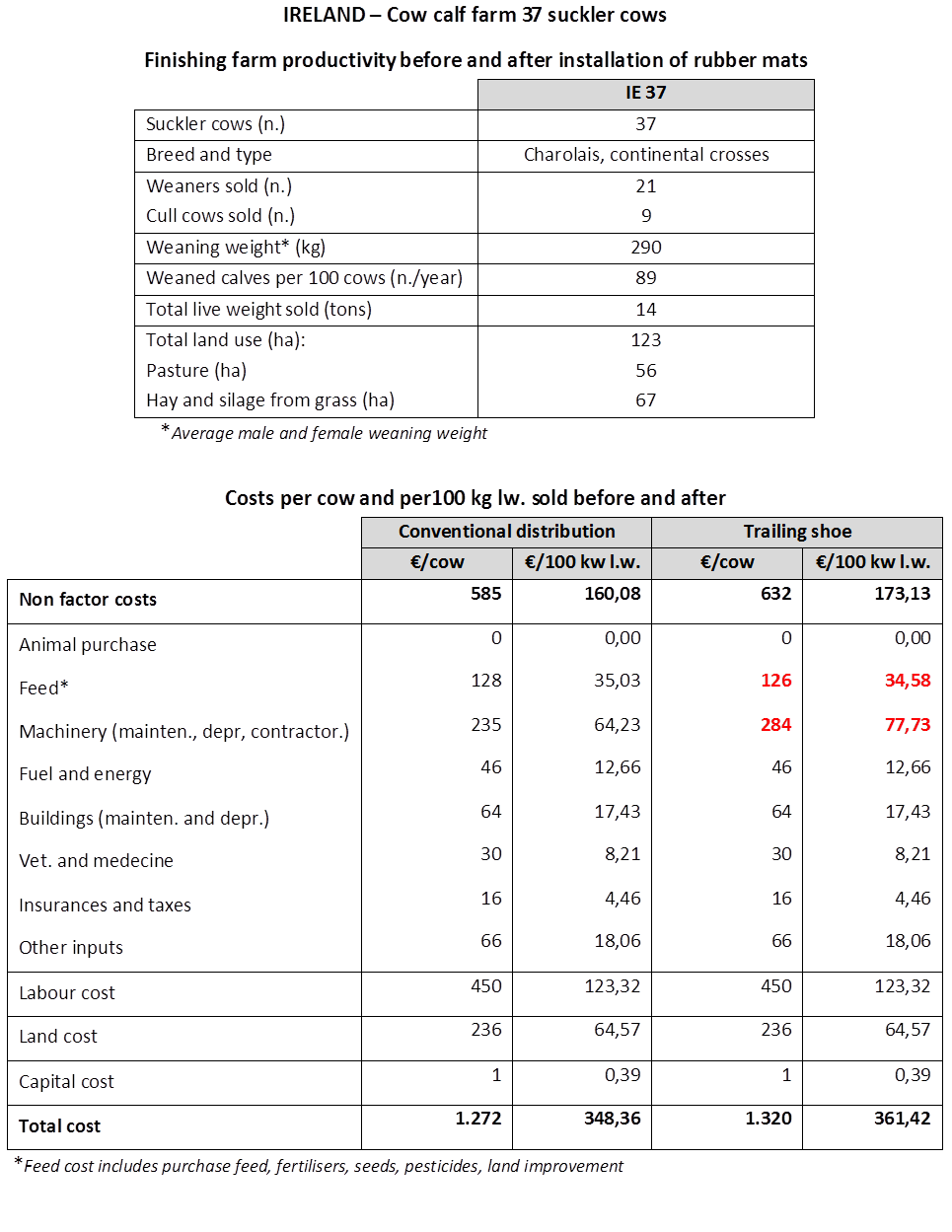

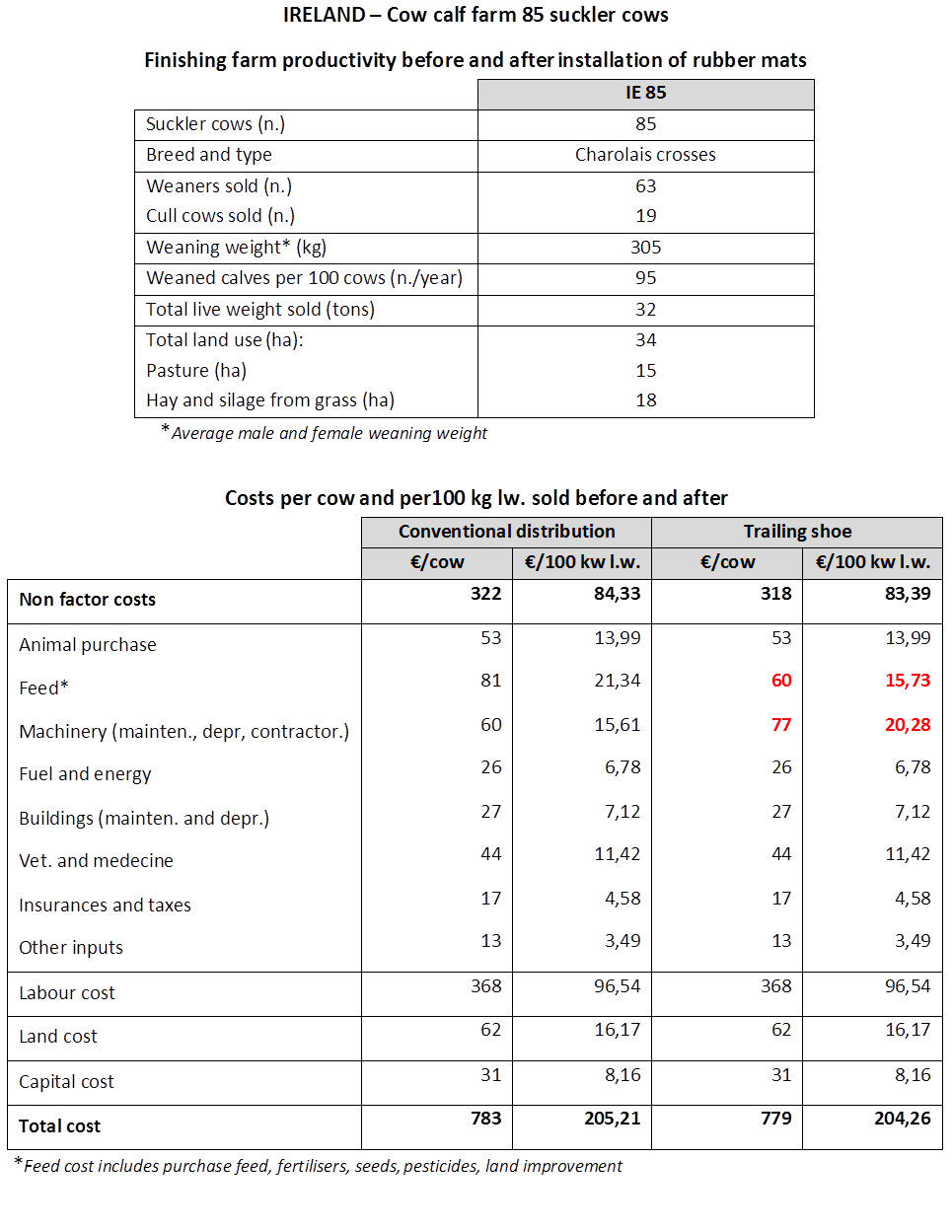
References
Association of Farm & Forestry Contractors in Ireland (FCI). Contracting charges guide 2021. https://www.FCI.ie/table-contractor-association-releases-full-2021-guide-rates/